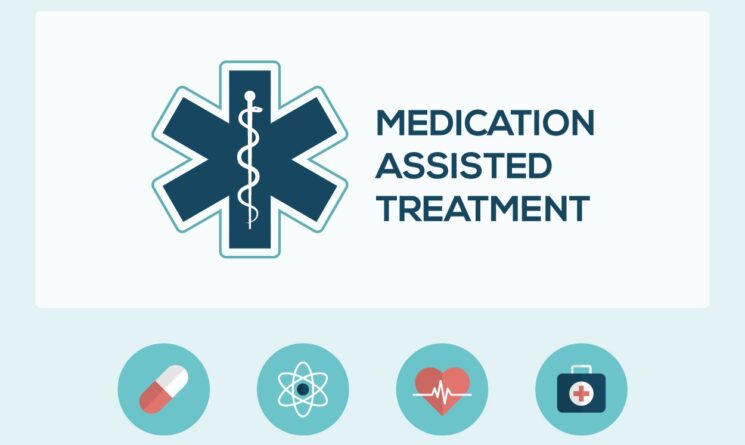The war on drugs has been a disaster. There’s no denying this reality, as opioid addiction has reached epidemic proportions, with a significant rise in overdoses and fatalities in recent years.
The widespread availability and prescription of opioid medications, coupled with the illicit opioid market, have fueled the crisis.
According to the CDC, 2024 saw a whopping 112,000 deaths as a result of opioid overdoses. This is a sharp increase when compared to 2020 when the number of deaths was 65,000.
It’s obvious that this is a serious issue and those addicted need help. However, if the data appears so dire, it raises questions about the de-addiction process. How tough is it to beat an opioid addiction? Well, in this article, let us explore why this type of dependency can be so strong, the impact it has, and what treatment options currently exist.
In This Post
What Factors Make De-addiction Difficult?

We know that opioids, including prescription painkillers and illegal drugs like heroin, are highly addictive. The euphoric effects they produce can lead to rapid tolerance and dependence, making it easy for individuals to develop a reliance on these substances.
However, the physiological and psychological factors make the addiction incredibly hard to overcome without external help. Let’s explore this further.
The Physiological Factor
One of the formidable hurdles in the journey to recovery is the development of physical dependence, a phenomenon that greatly contributes to the difficulty of overcoming opioid addiction.
Physical dependence occurs when the body becomes adapted to opioids. This leads to a range of physiological changes that manifest as withdrawal symptoms when the drug is withheld.
Chronic opioid use results in alterations to neurotransmitter systems, particularly those involved in pain perception and reward. The brain becomes accustomed to the presence of opioids, and when their supply is reduced or eliminated, the abrupt shift triggers a cascade of withdrawal symptoms.
The Psychological Factor
Opioid addiction is often intertwined with underlying psychological trauma and chronic stress. The euphoria induced by opioids creates an immediate and intense sense of escape from reality.
This escape becomes a compelling force, drawing individuals into a cycle of repeated use as they chase the fleeting moments of detachment and bliss. The allure lies not only in the physical sensation but also in the emotional respite that opioids seem to offer.
As individuals become ensnared in the grip of opioid addiction, the cycle of escape and return becomes increasingly difficult to break. The temporary relief provided by opioids is often followed by a resurgence of the very problems individuals seek to evade, leading to a perpetual loop of substance use.
This cyclic pattern reinforces the belief that escape through opioids is the only viable solution, exacerbating the strength of the addiction.
Addressing the root causes requires a deep exploration of these underlying psychological issues, which can be a challenging and time-consuming process.
Negative thought patterns and maladaptive behaviors become ingrained during opioid use, making it tough for the person to escape the cycle of addiction. When you remember that cravings and triggers are connected to thoughts and feelings, it becomes obvious how they can be so powerful.
How Does an Opioid Addiction Affect People?

Chronic opioid use can lead to respiratory depression, constipation, and hormonal imbalances. The risk of overdose, often resulting in respiratory failure, is a constant threat, amplifying the urgency of addressing this crisis.
The addiction also places an immense burden on society and the economy. Productivity loss, healthcare costs, and the strain on social services add to a substantial economic toll. Families grapple with the emotional and financial repercussions, further emphasizing the severity of this crisis.
Likewise, communities are deeply affected by the repercussions of opioid addiction. Increased crime rates, strained healthcare resources, and a surge in the number of children placed in foster care due to parental addiction all contribute to the deterioration of community well-being. It’s safe to say that the ripple effects extend far beyond individual users.
What Methods Are Used to Treat Opioid Addictions?

There are several evidence-based treatments for opioid addiction, and the most effective approach often involves medical interventions, talk therapy, and multi-level support. Let’s take a closer look.
Medication-Assisted Treatment (MAT)
MAT employs three main medications: methadone, buprenorphine, and naltrexone. Methadone, a long-acting opioid agonist, stabilizes individuals by reducing cravings and withdrawal symptoms.
Buprenorphine, a partial agonist, offers a safer alternative and can be prescribed by qualified healthcare providers. Similarly, naltrexone is an opioid antagonist that blocks opioid effects, preventing relapse after detoxification.
However, there are some issues to be aware of with MAT. Medications like Buprenorphine sold under the brand ‘Suboxone’ do have side effects. According to TruLaw, people who have taken the drug have experienced severe tooth decay.
It’s no wonder then that people who took the drug are beginning to file suboxone lawsuit cases against Indivior and other manufacturers. Added health issues are the last thing you want when you are trying to beat an opioid addiction.
Regardless, MAT remains one of the most important de-addiction methods that we have today.
Behavioral Therapy

Behavioral therapy has emerged as a crucial element in the comprehensive treatment of opioid addiction. It addresses the cognitive and emotional aspects that contribute to substance use disorders.
CBT is a widely utilized form of behavioral therapy in the treatment of opioid addiction. The core reasoning behind most behavioral therapies, including CBT, is to help people identify and modify negative patterns of thinking that contribute to substance use.
Similarly, contingency management is a behavioral therapy approach that focuses on encouraging people to abstain from opioid use. It makes use of positive reinforcement to achieve this. It might involve introducing rewards for achieving specific treatment goals.
In conclusion, recovery from an opioid addiction is tough but possible. Considering the number of people who suffer from it, there have been countless studies dedicated to finding effective de-addiction methods for opioid addictions.
As we have learned today, medication-assisted treatment is one of the most effective de-addiction methods that currently exists, especially when combined with behavioral therapy. Sure, the FDA might have concerns about buprenorphine and the way it affects dental health, but by and large, de-addiction is very much possible with these approaches.